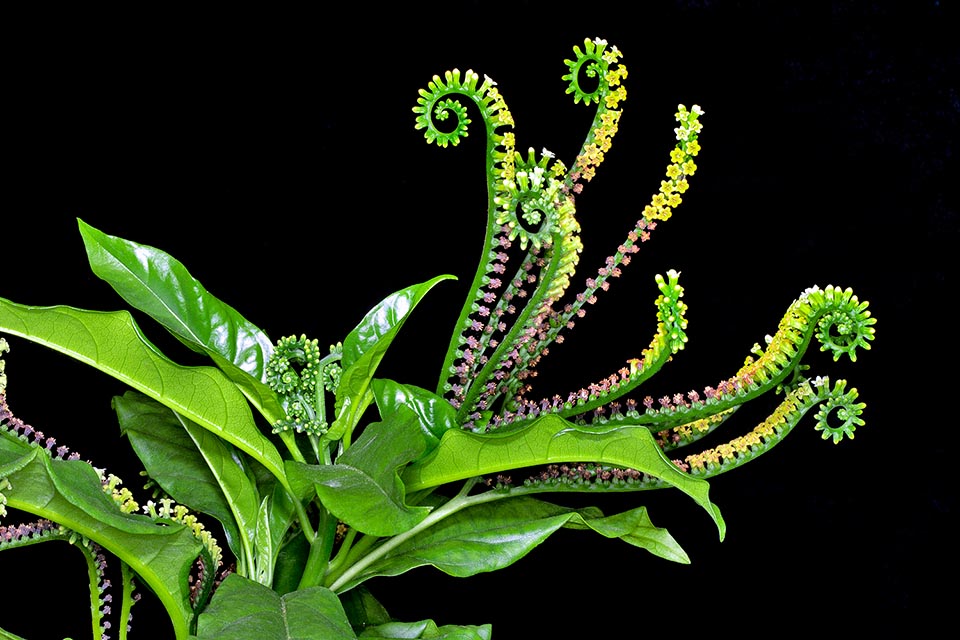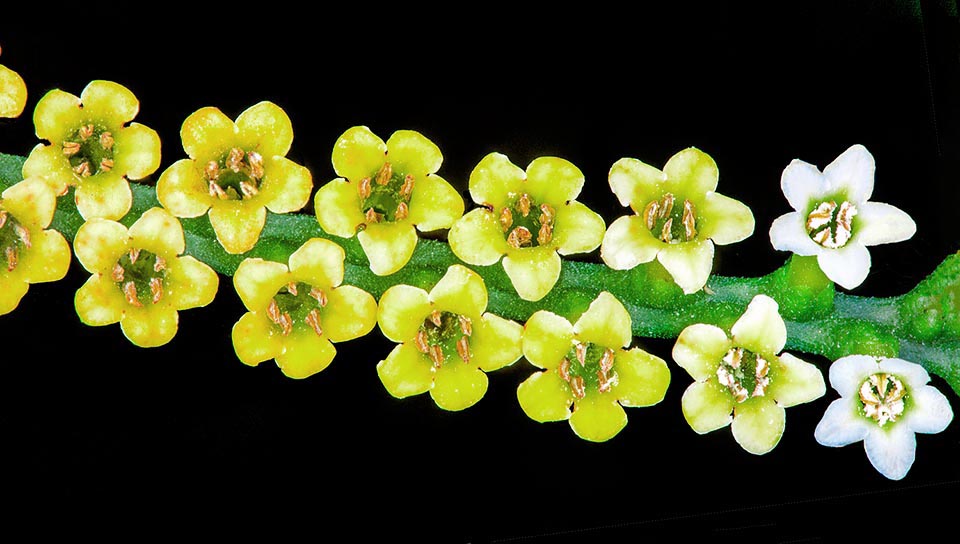Family : Boraginaceae

Text © Pietro Puccio

English translation by Mario Beltramini

Relative to borago, the Tournefortia staminea is an unusual shrub endemic to Jamaica, where grows between 600 and 900 m of altitude © Giuseppe Mazza
The species is native to Jamaica where it grows between 600 and 900 m of altitude.
The genus is honoured to the French botanist Joseph Pitton de Tournefort (1656-1708), Linnaeus precursor in the classification of the plants, who conceived a system based on the shape of the corolla and, first, fixed permanently the concept of genus. The specific name is the Latin adjective “stamineus, a, um” = full of threads, covered by threads, with reference to the prominent anthers.
The Tournefortia staminea Griseb. (1862) is a shrub with leaves, on a 1-2 cm long petiole, alternate, simple, oblong-elliptic to elliptic-lanceolate, with obtuse apex and entire margin, of intense green colour, coriaceous, glossy, 8-12 cm long and 2,5-4,5 cm broad.

Unknown outside its origin area has become a tropical garden plant in 2006, thanks to a botanic expedition of the Fairchild Tropical Botanic Garden © Giuseppe Mazza
Terminal scorpioid cymose inflorescences bearing a multitude of tiny sessile flowers of white yellowish colour. Pentapartite green calyx, infundibuliform corolla with tube pubescent outside and 5 rounded lobe, sub-sessile oblong anthers with prominent apex, quadrilocular ovary with one ovule per cavity. The fruit is a globose drupe containing 1-4 seeds.
Species unknown outside the area of origin until 2006, when during a botanical expedition in Jamaica of the Fairchild Tropical Botanic Garden have been taken cuttings for the reproduction that had perfectly taken roots. The plant, that blooms continuously, arouses interest and curiosity due to the curved inflorescences that remind the Learnean Hydra, serpentine monster of the Greek and Roman mythologies with many heads.
→ To appreciate the biodiversity within the BORAGINACEAE family please click here.
